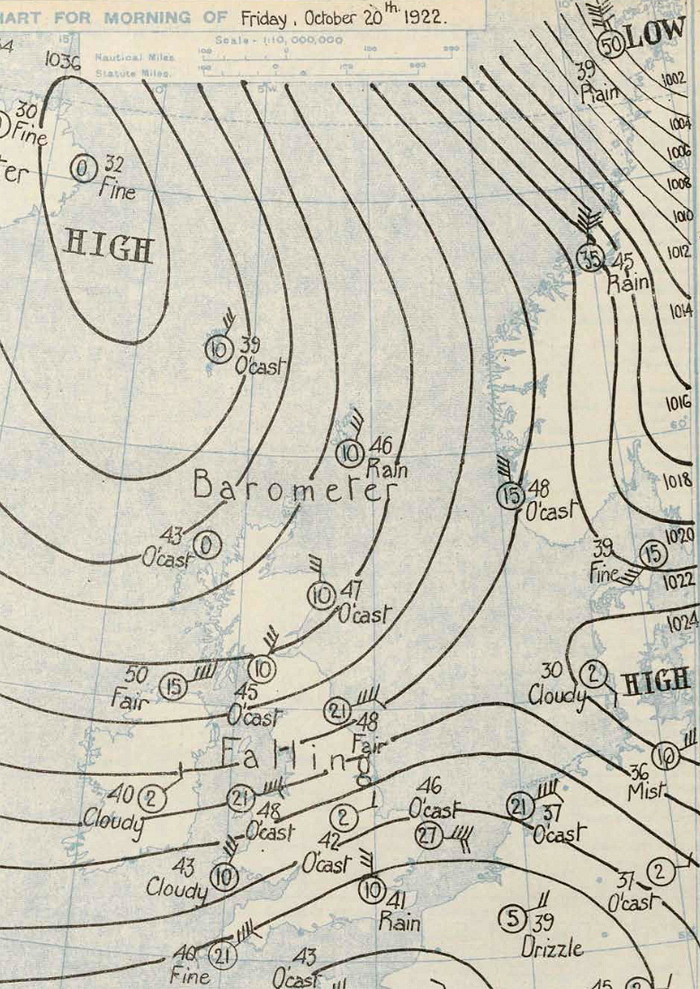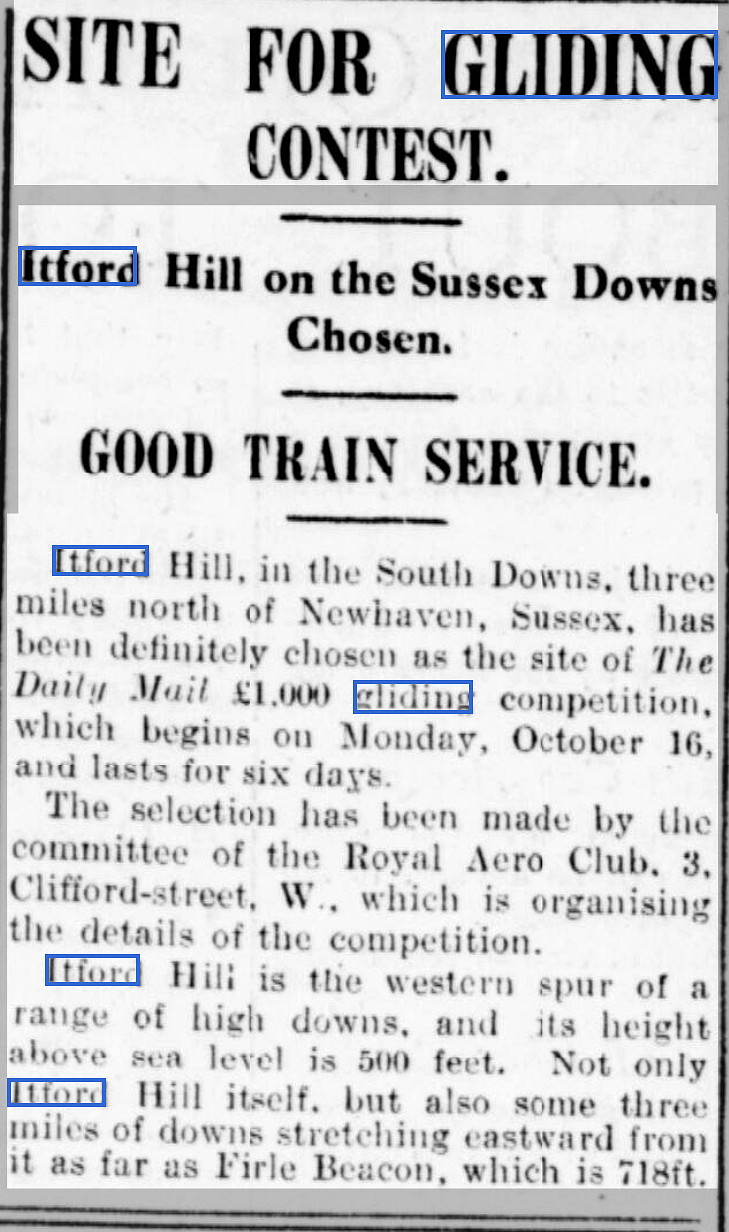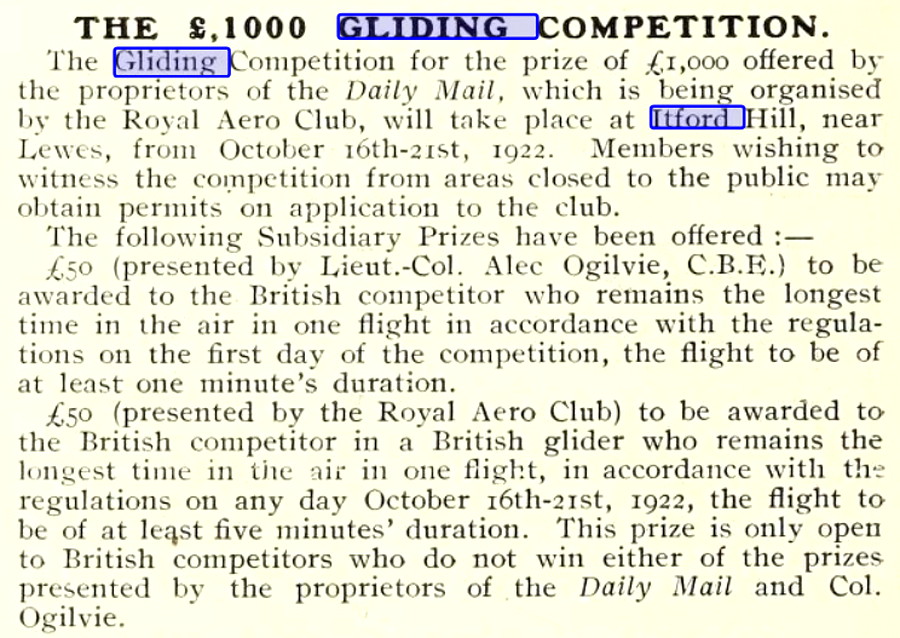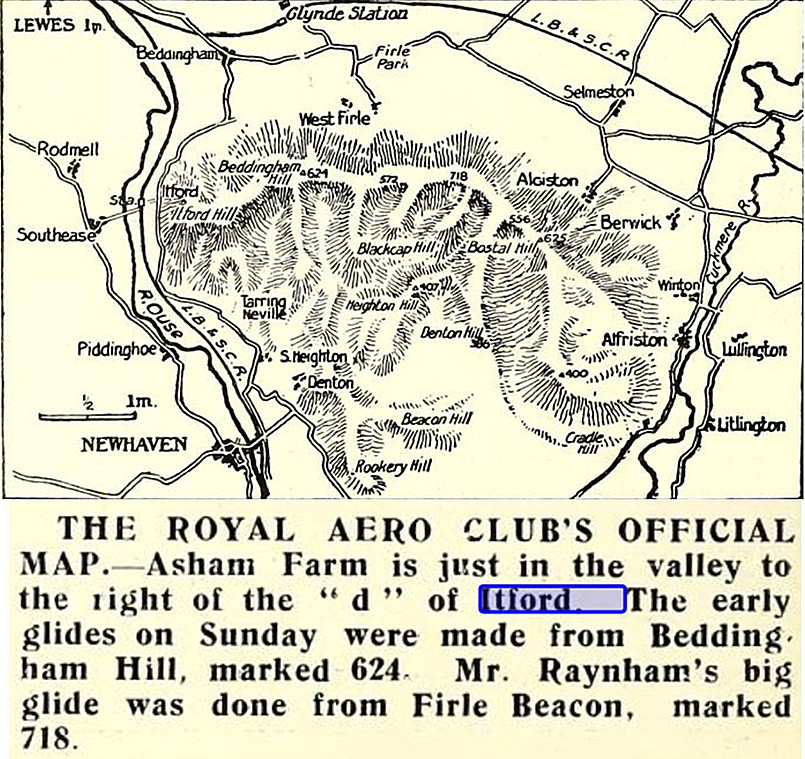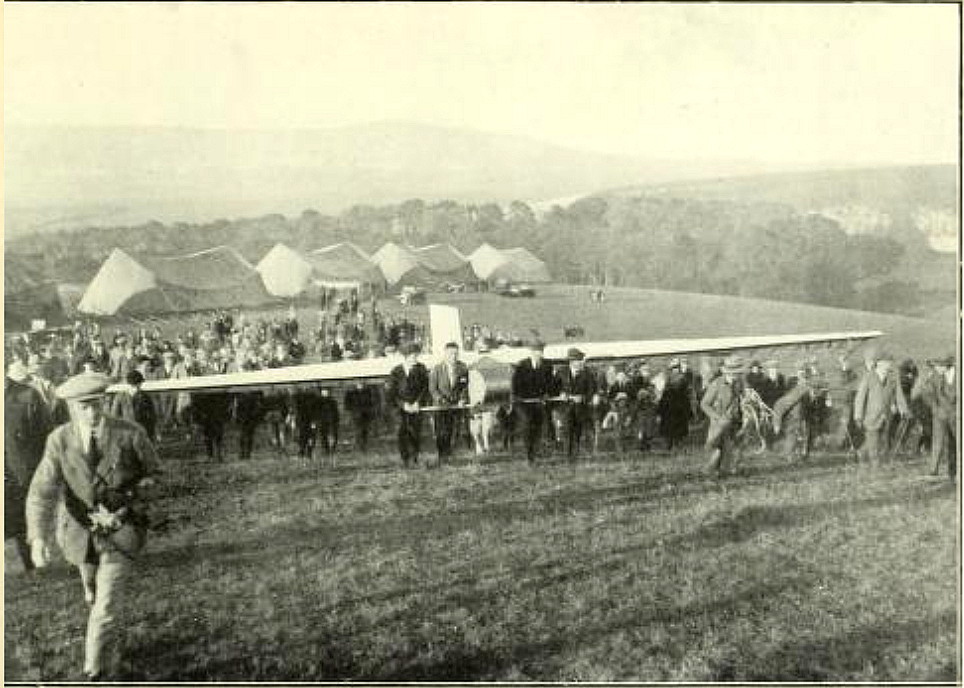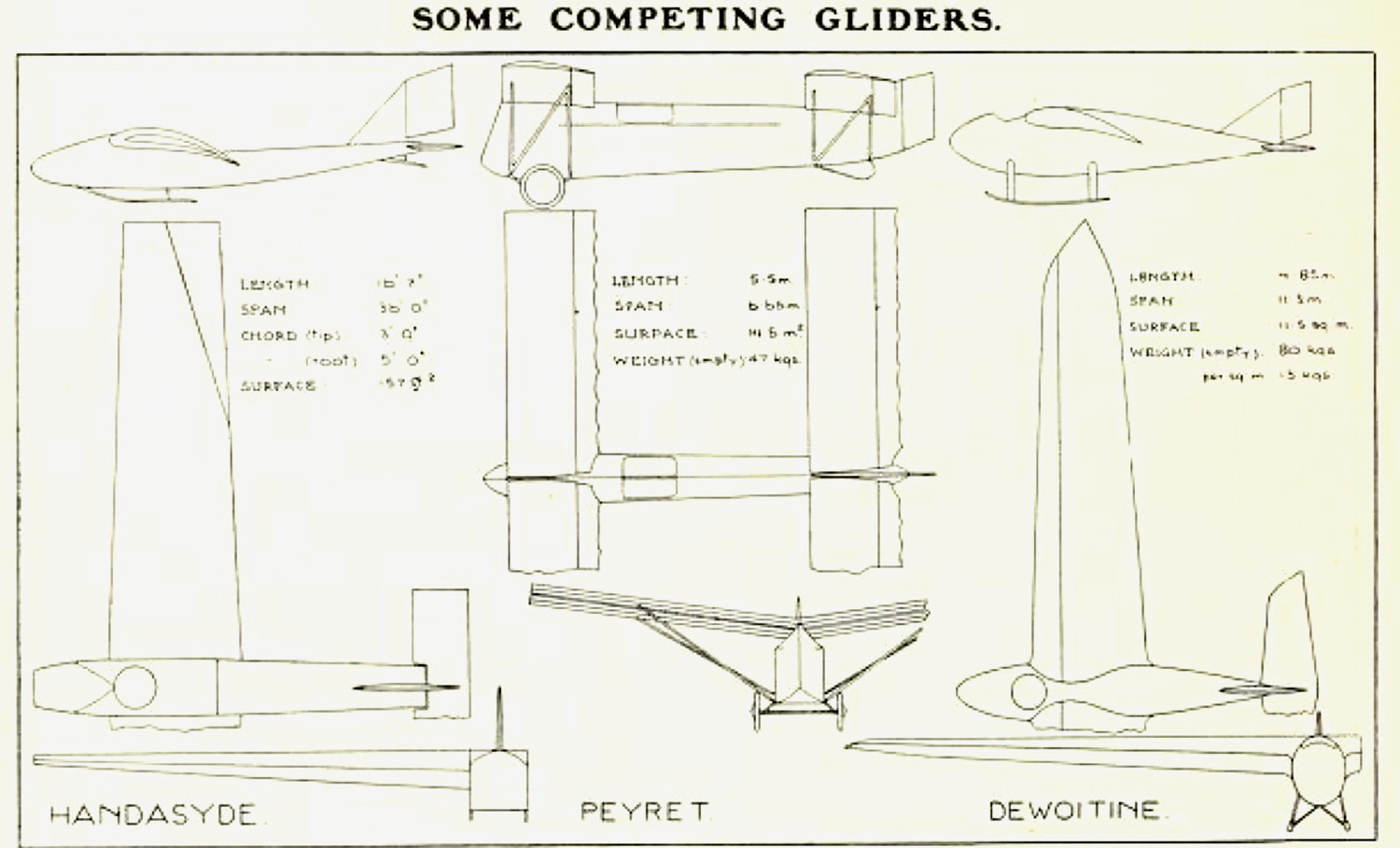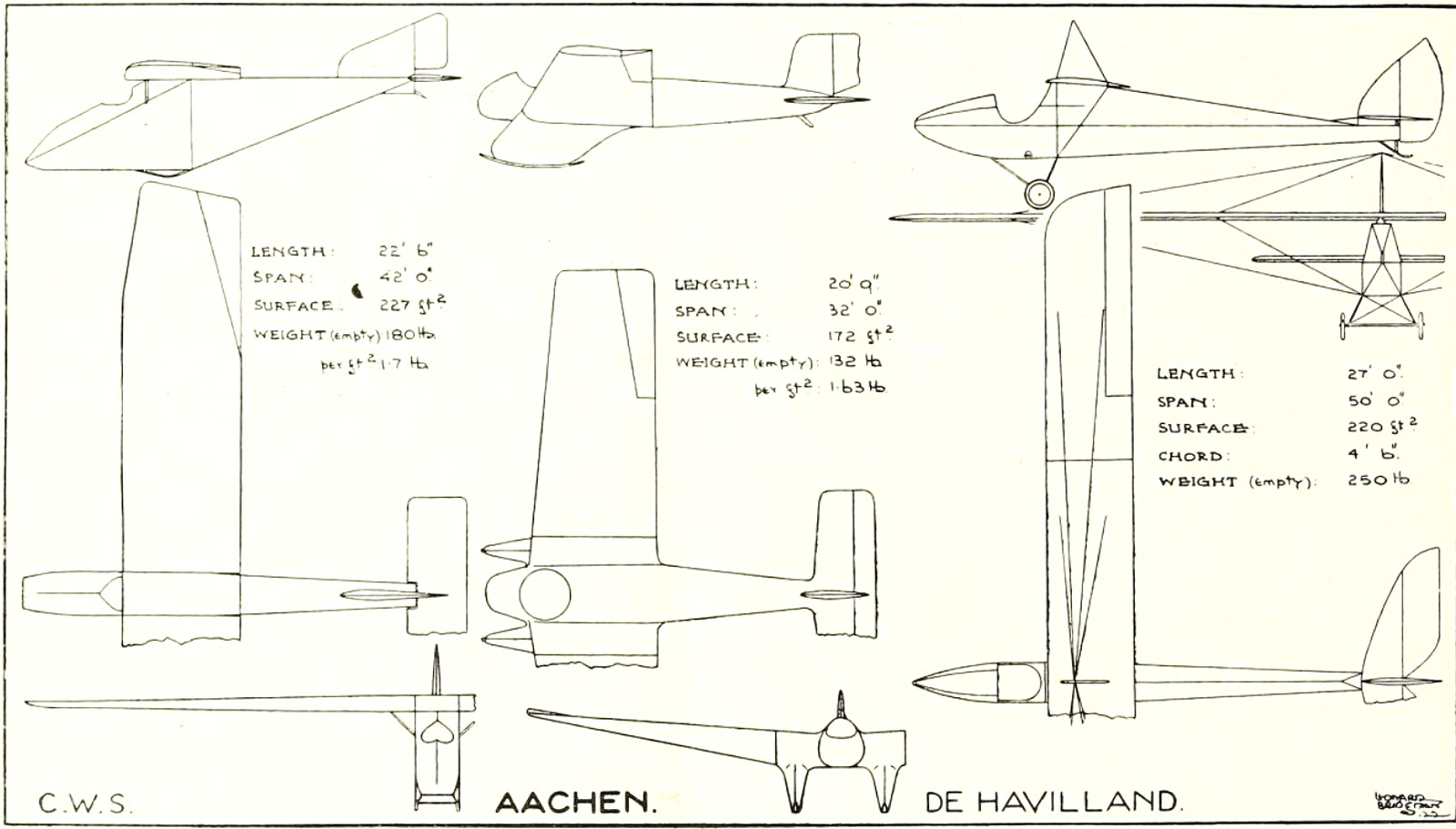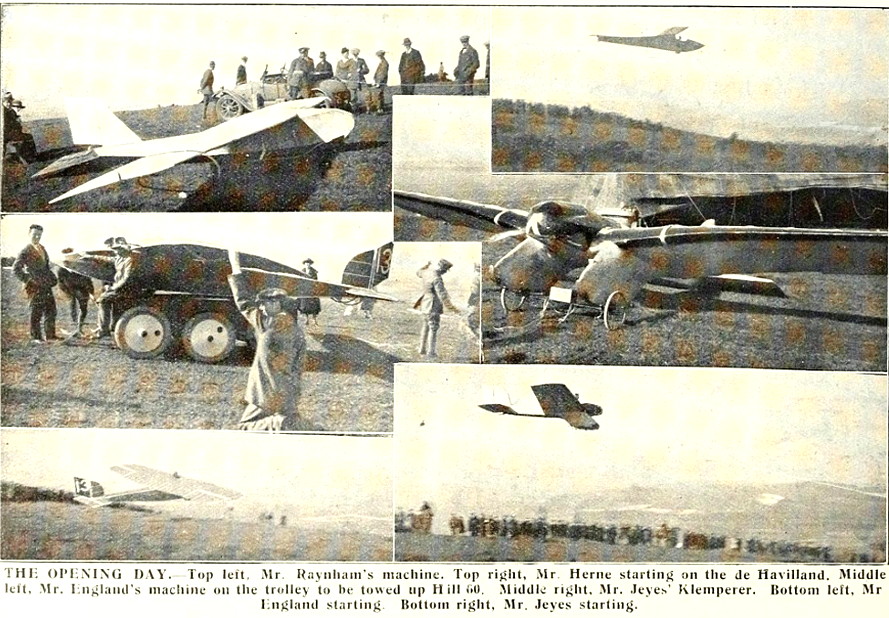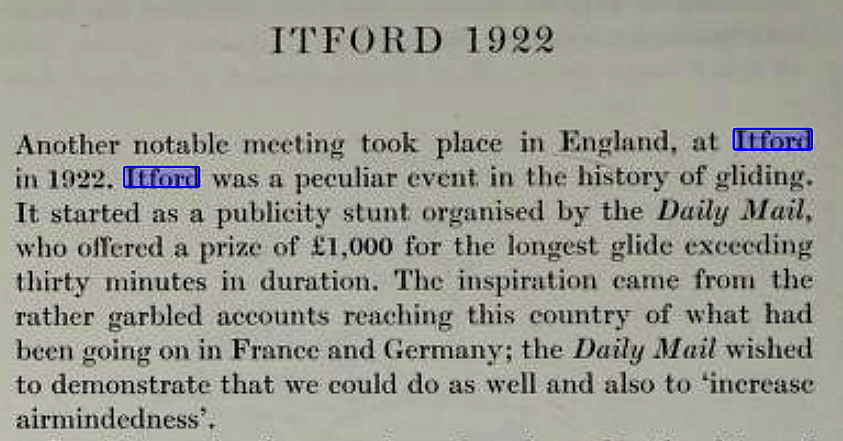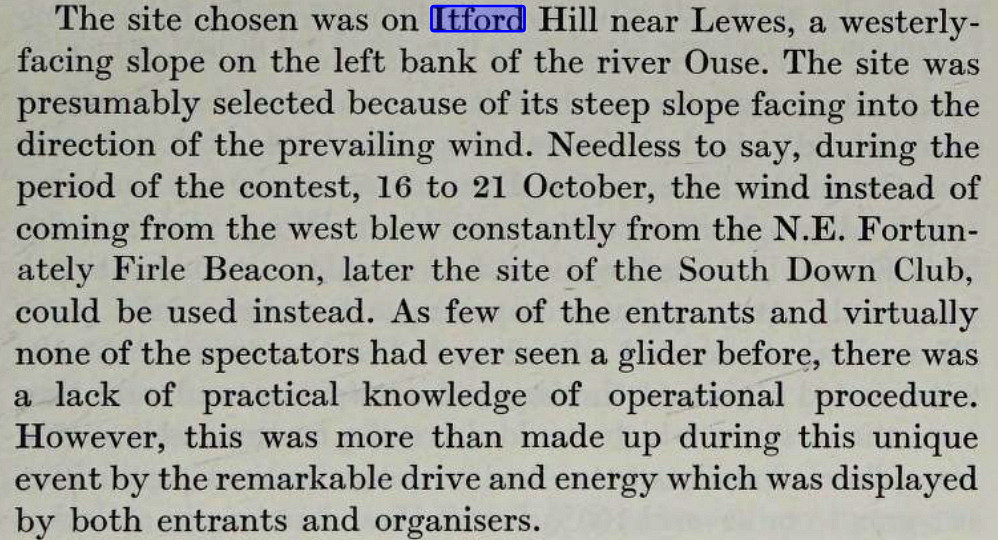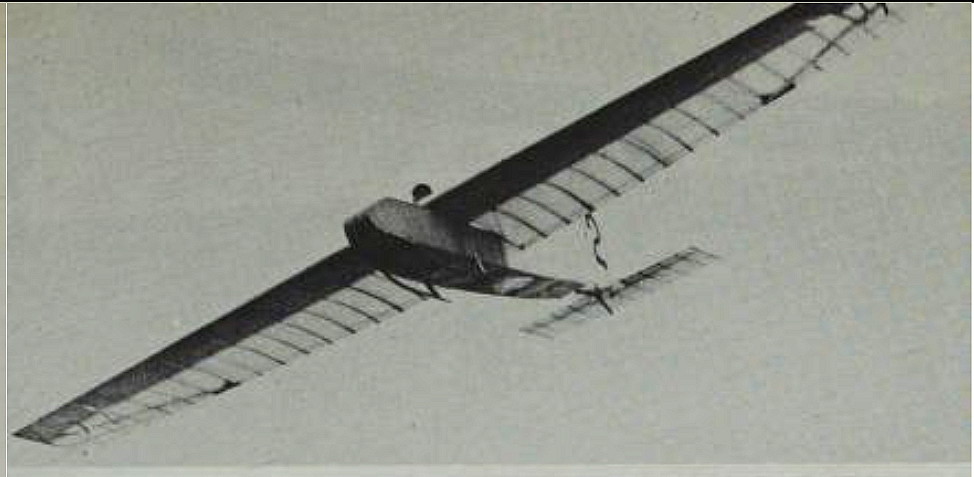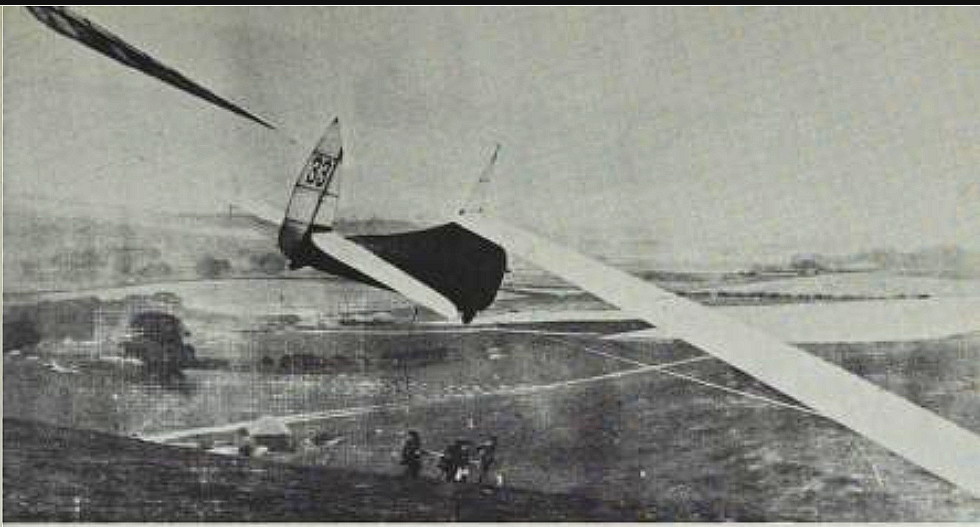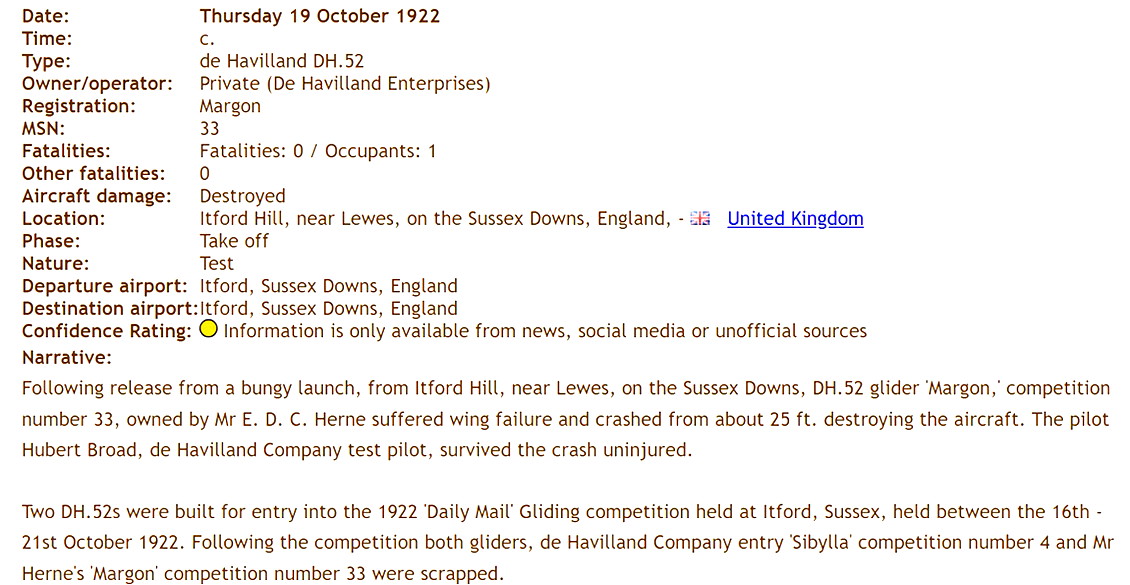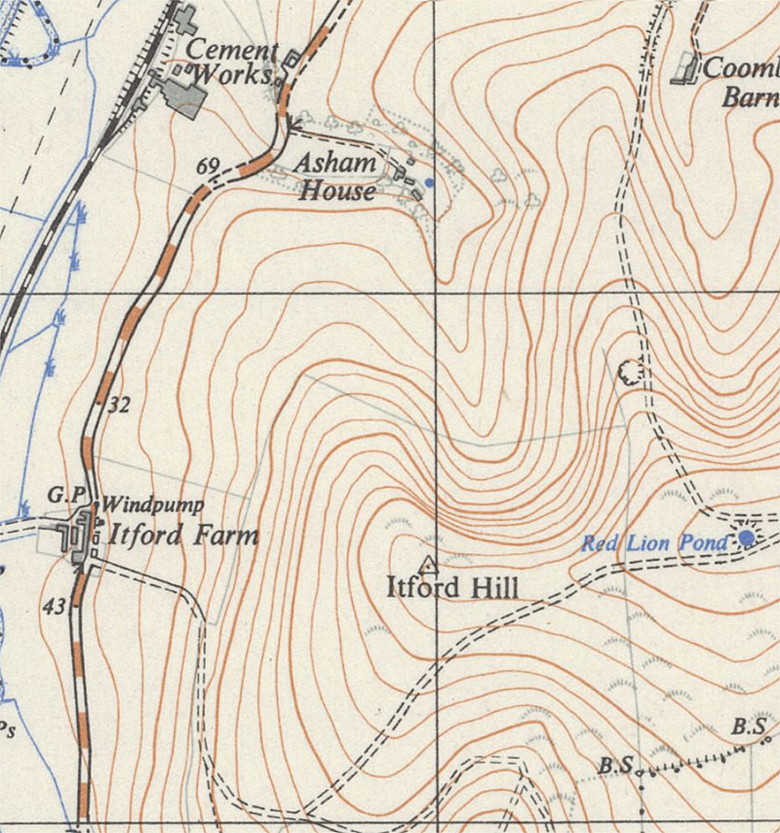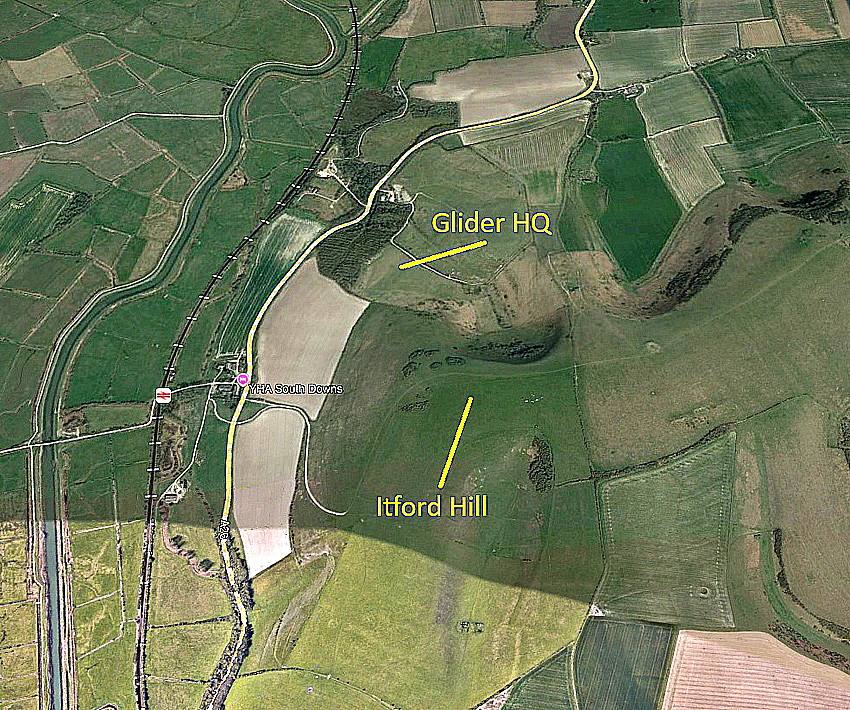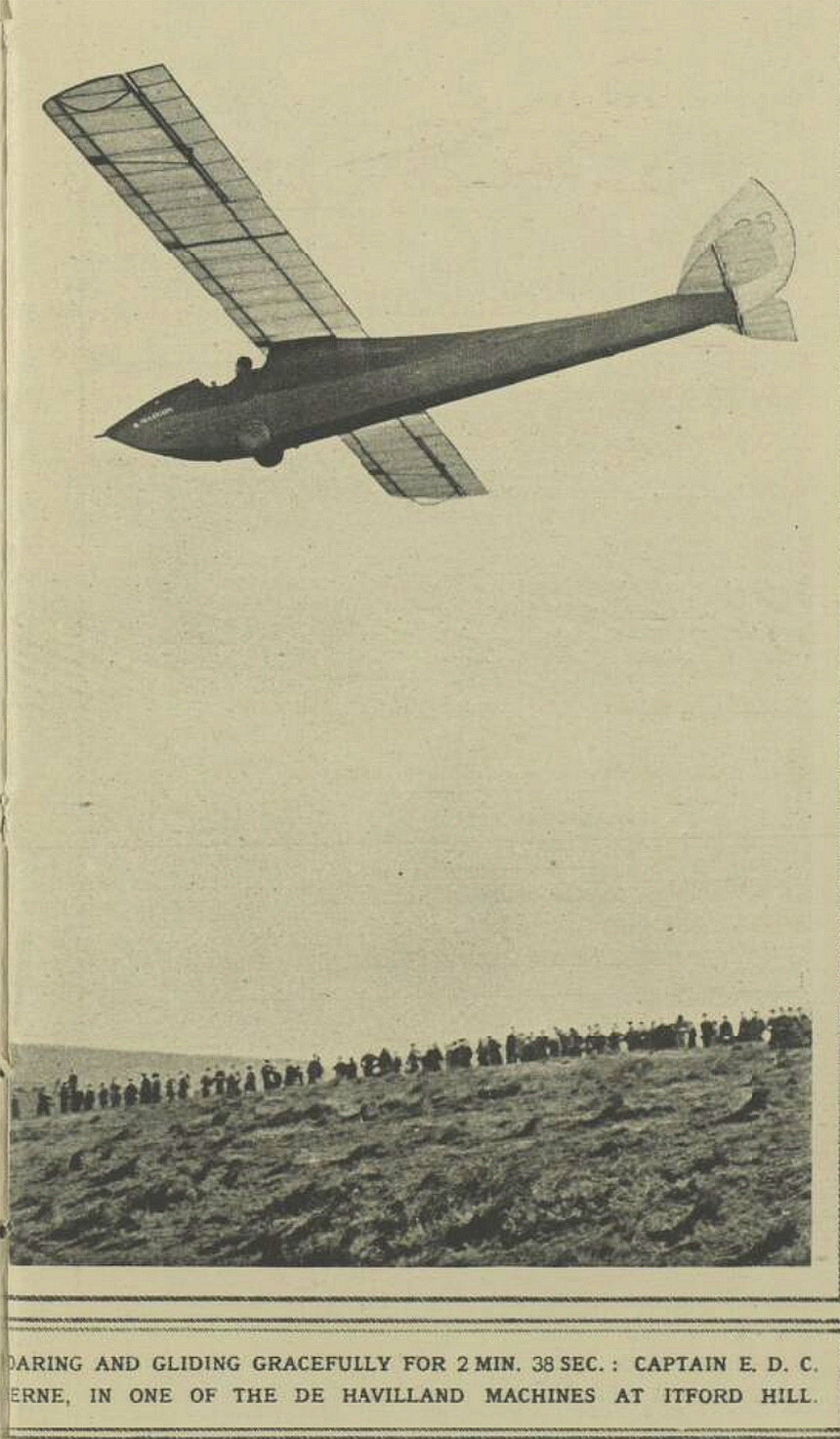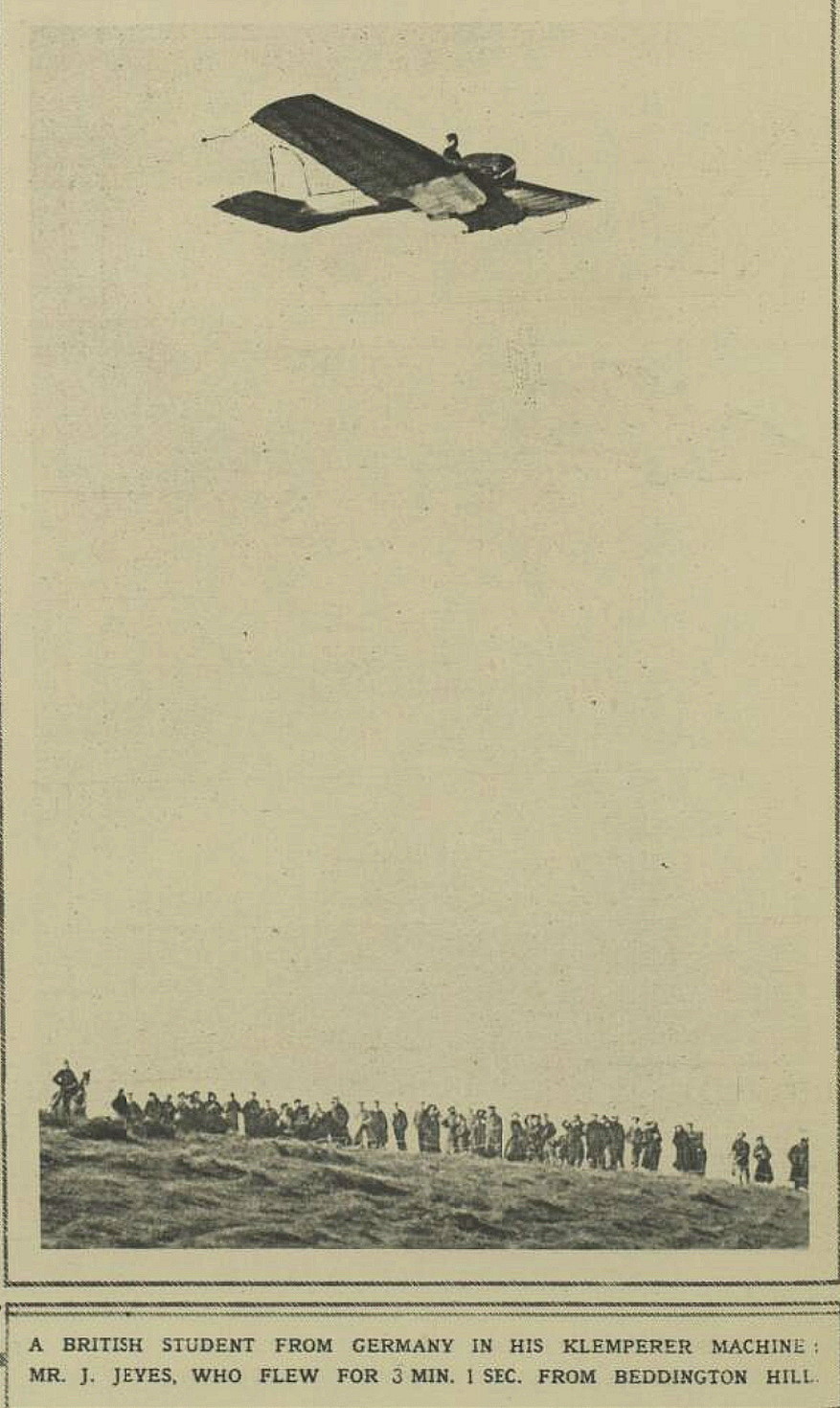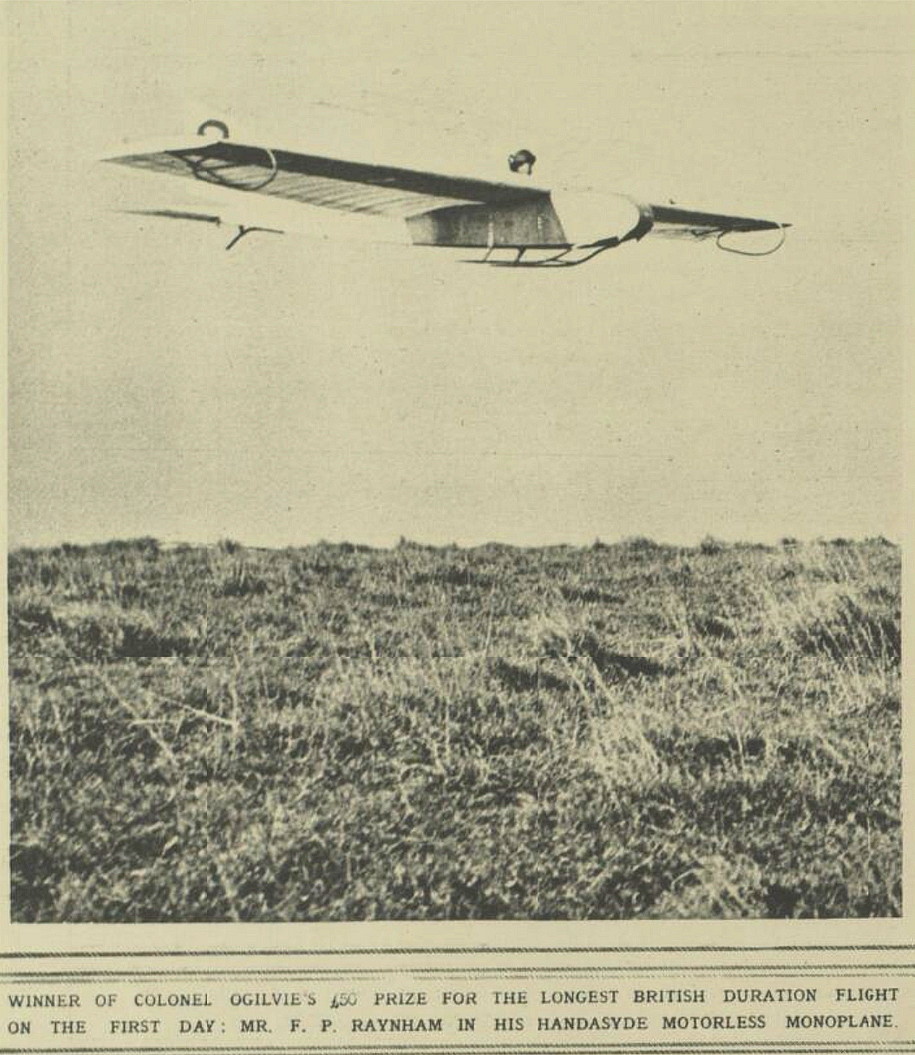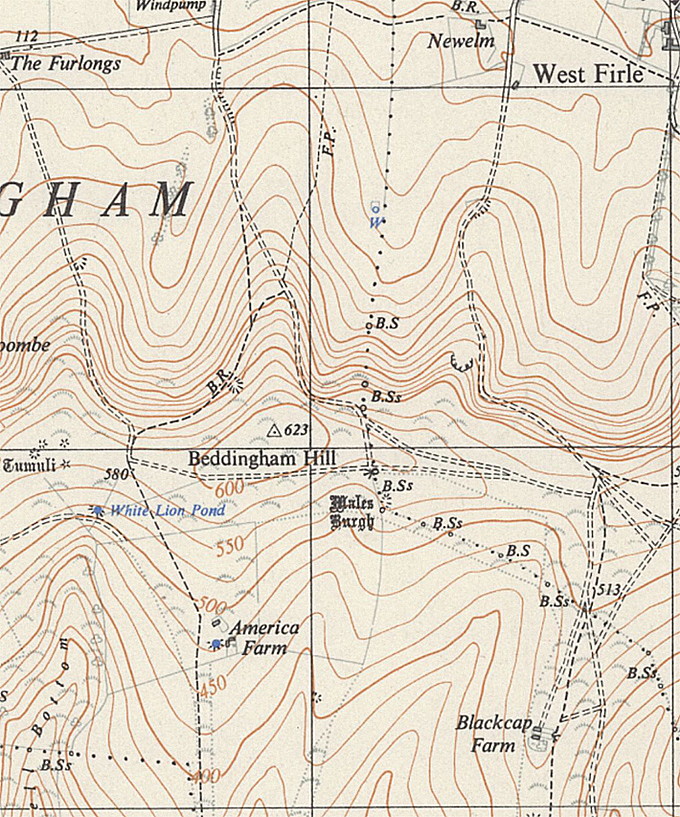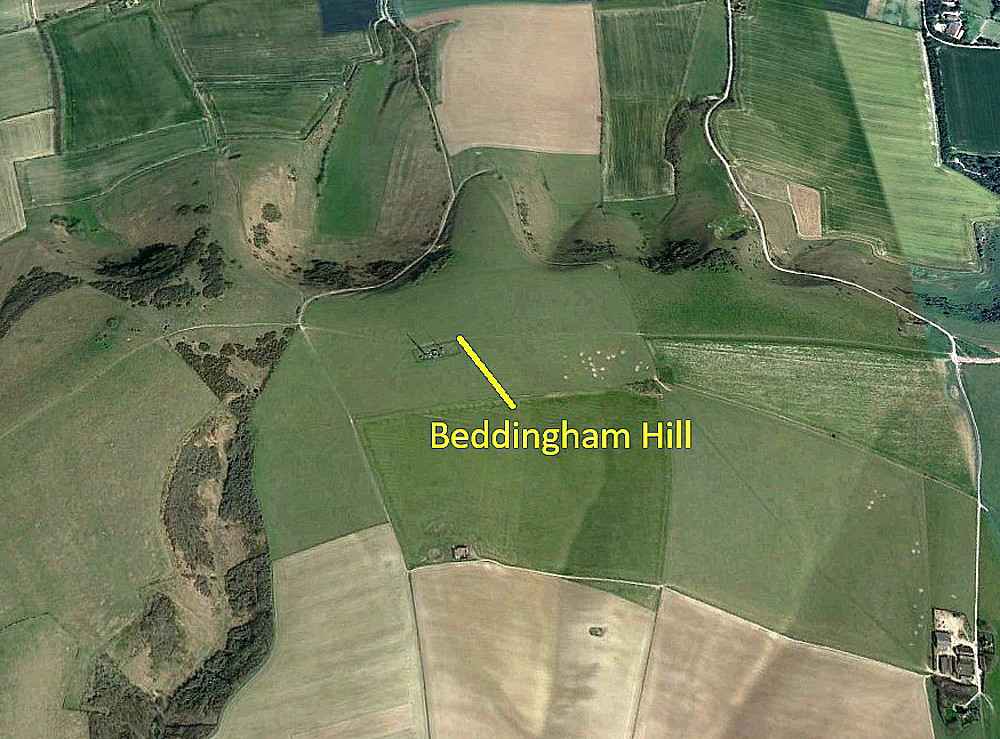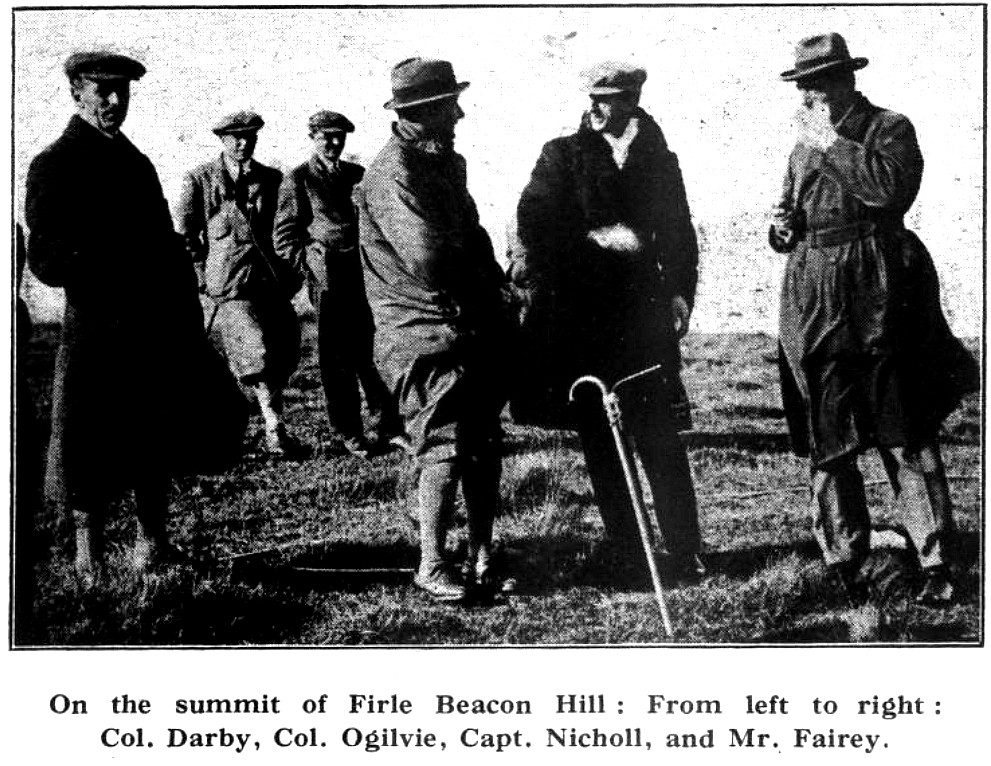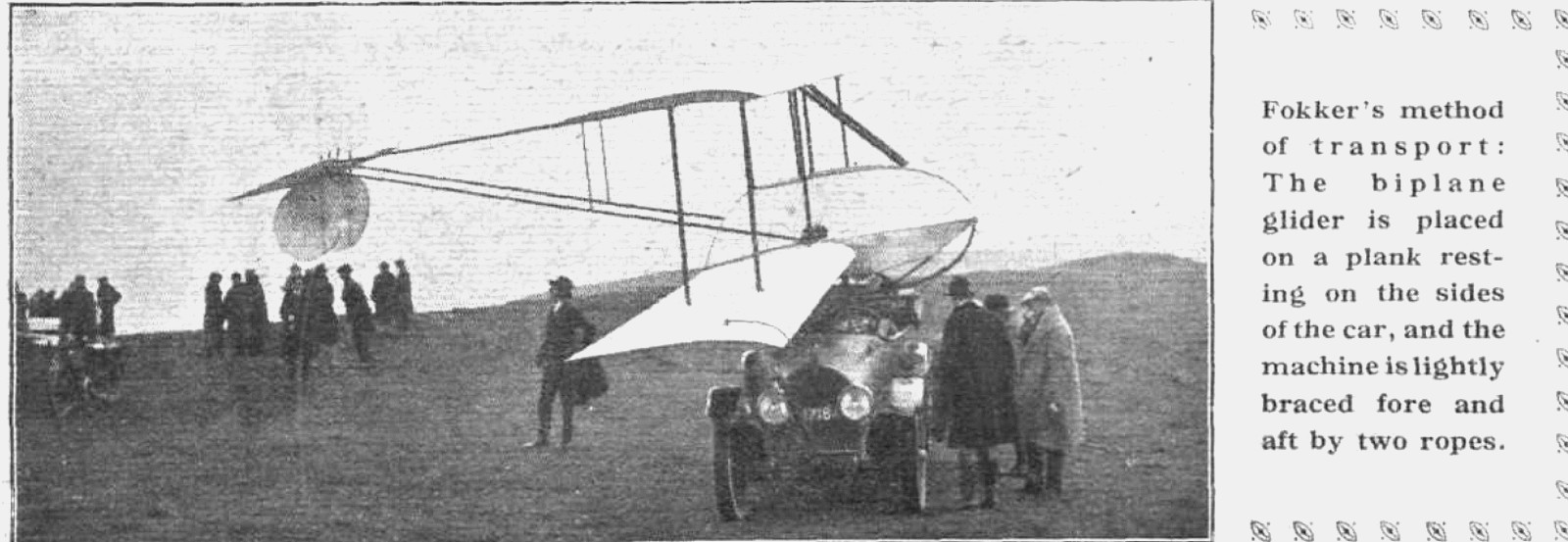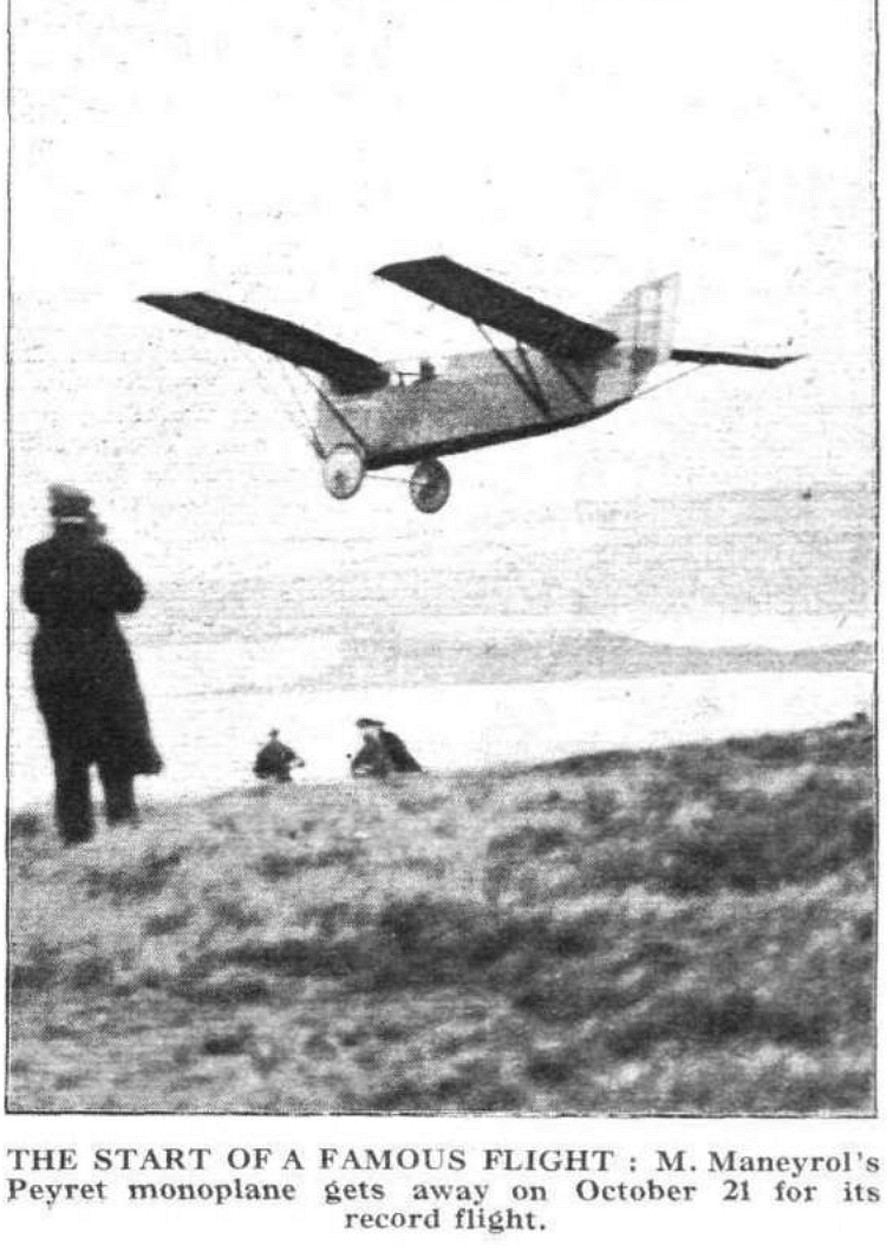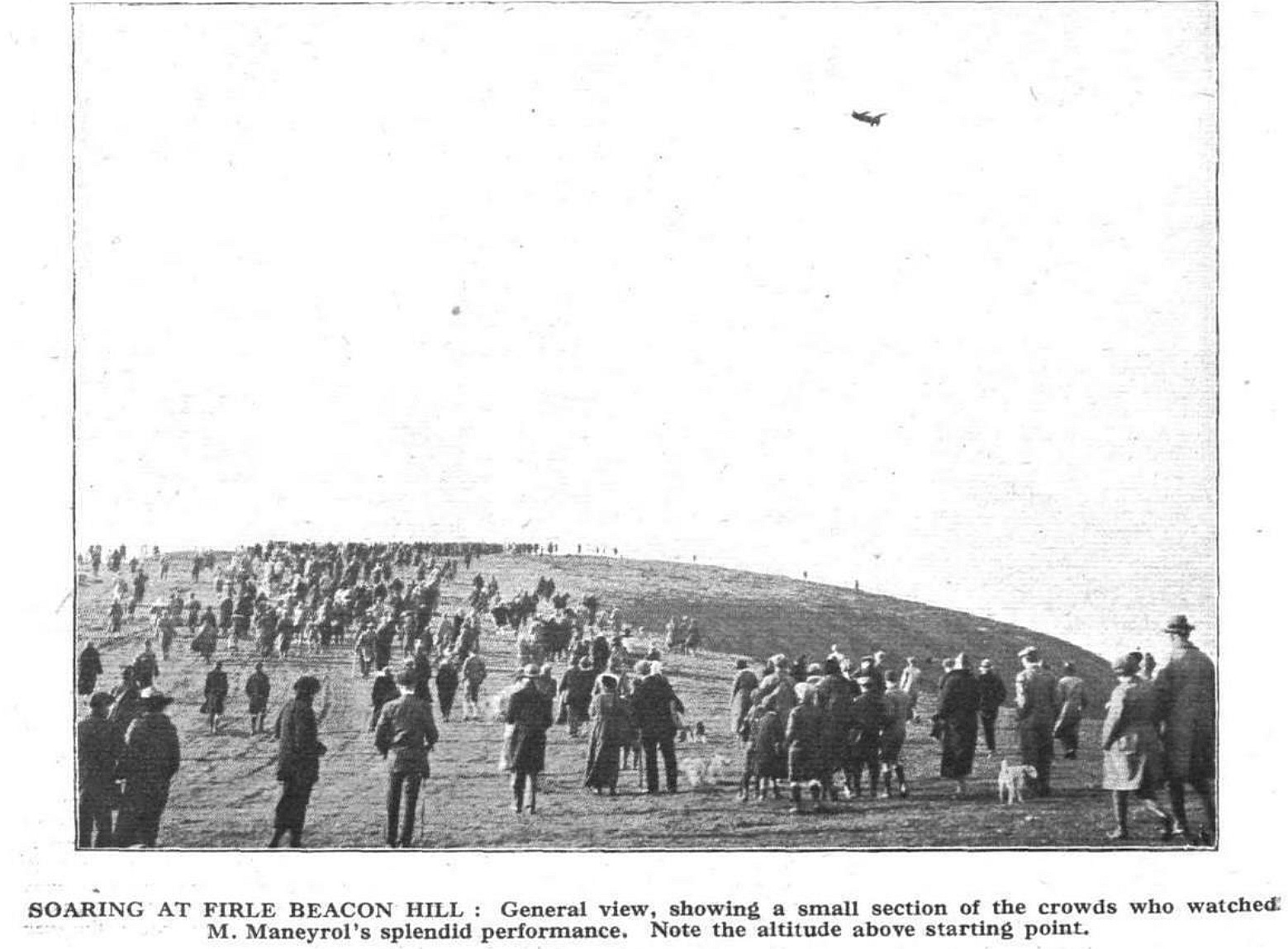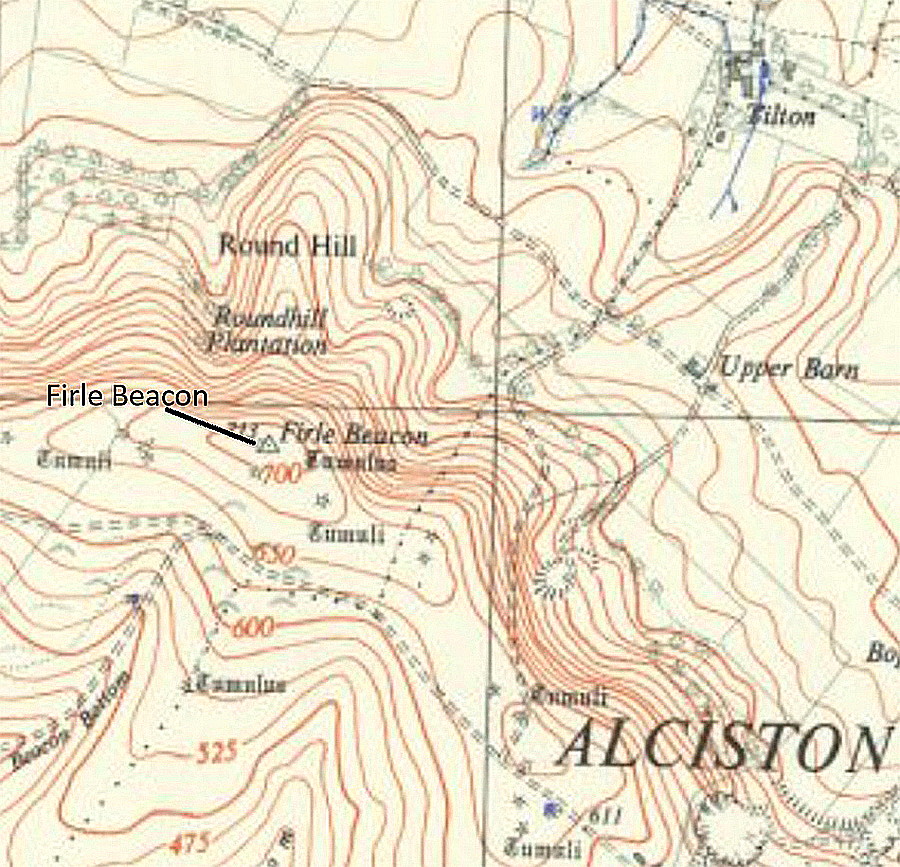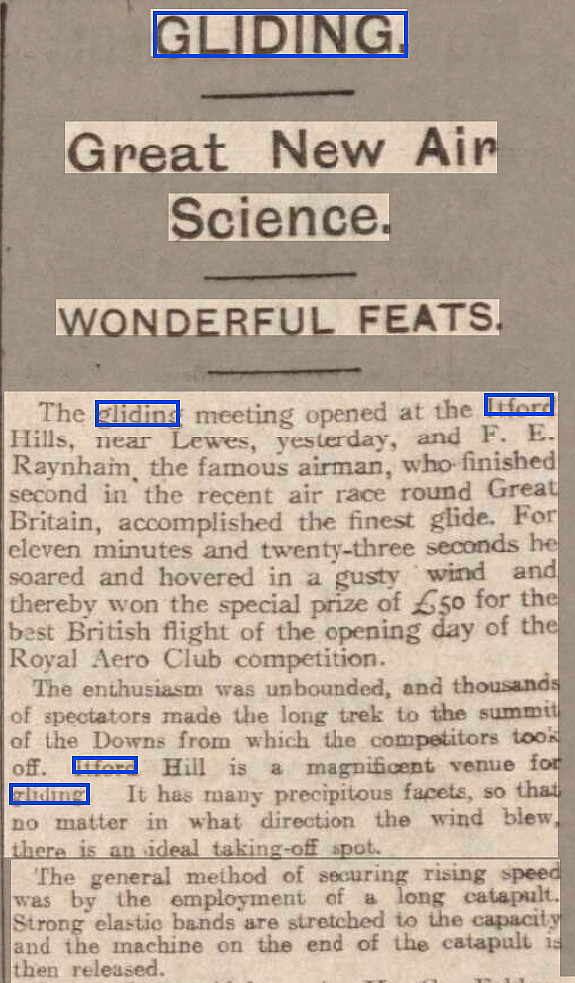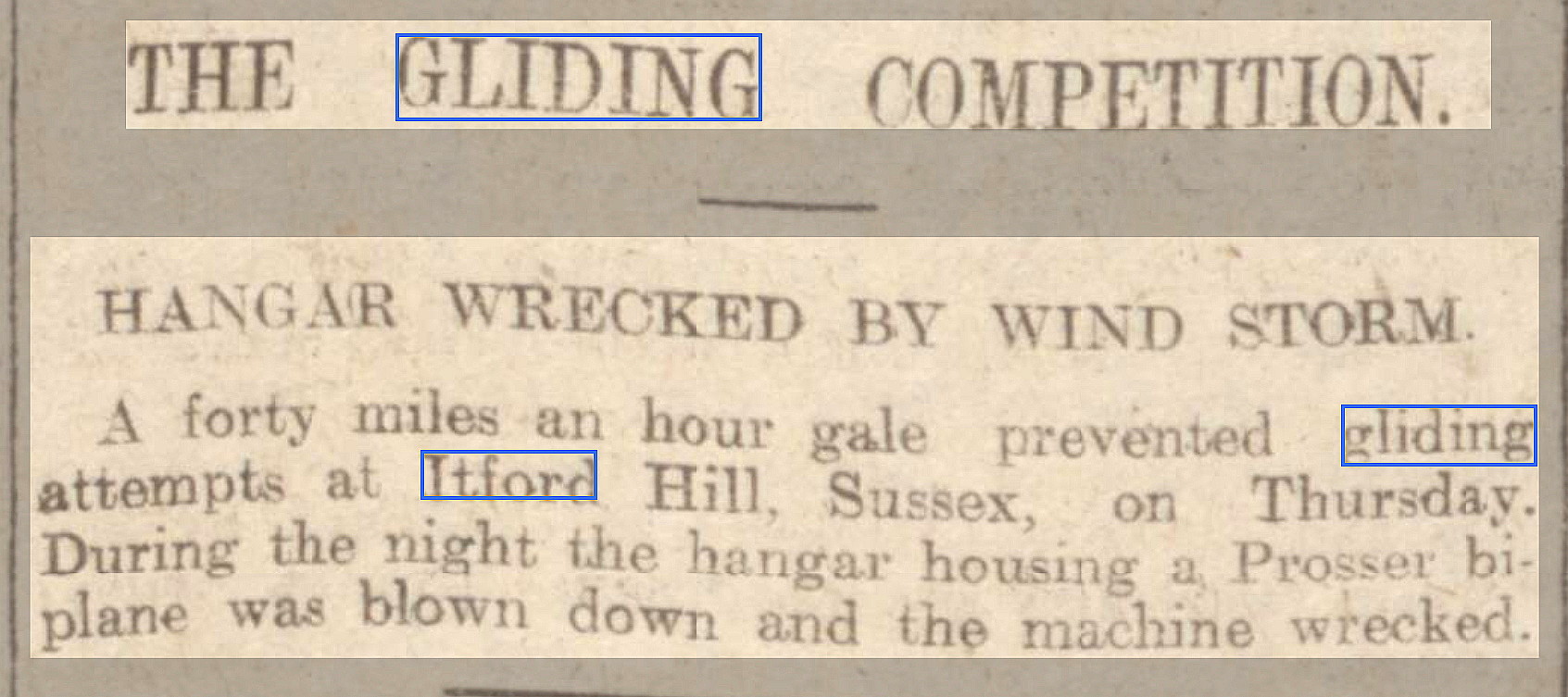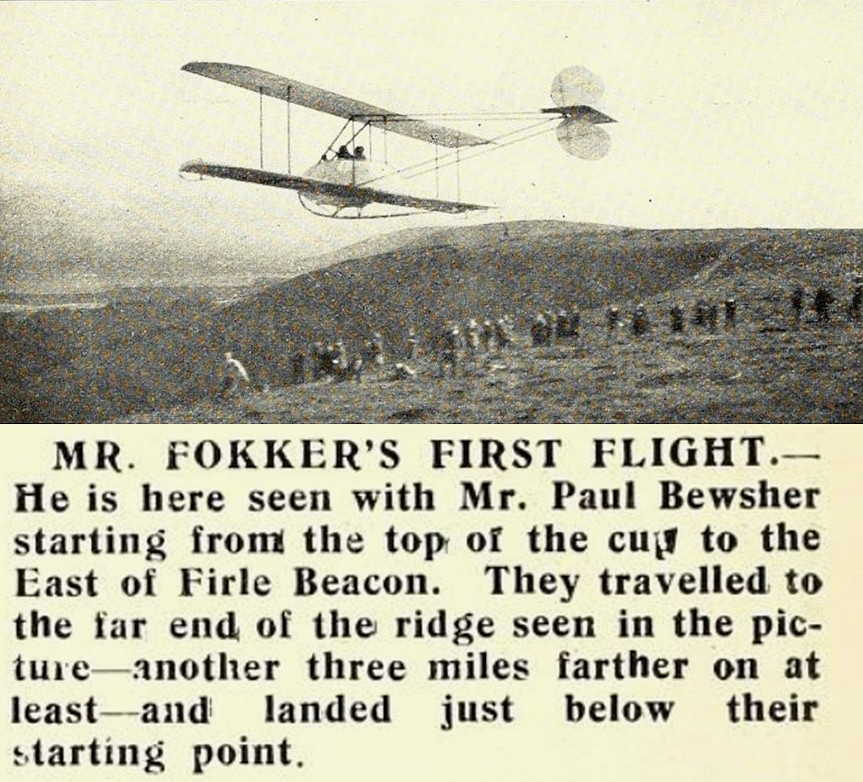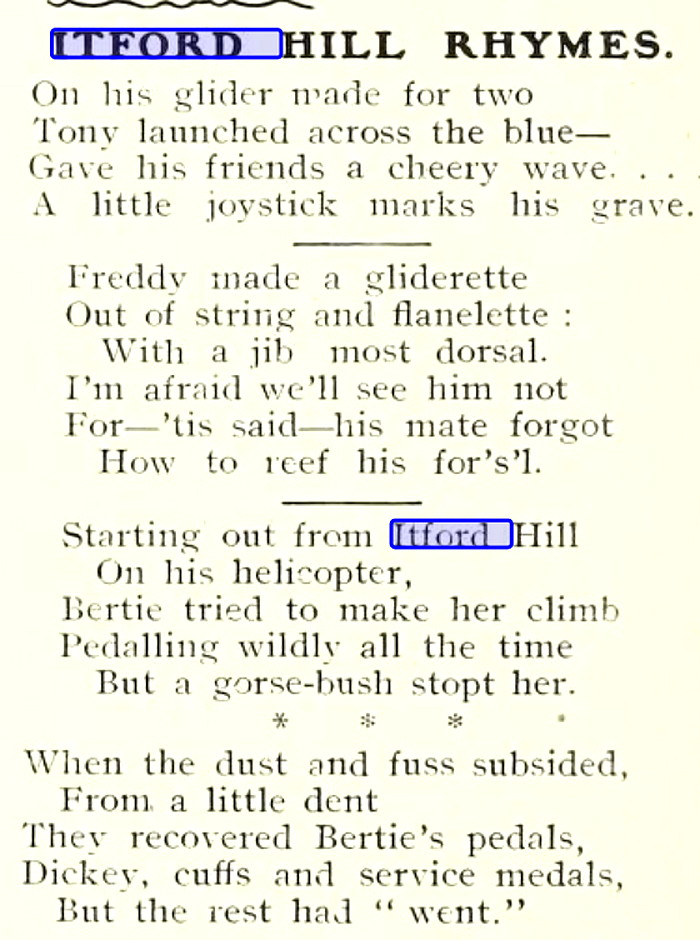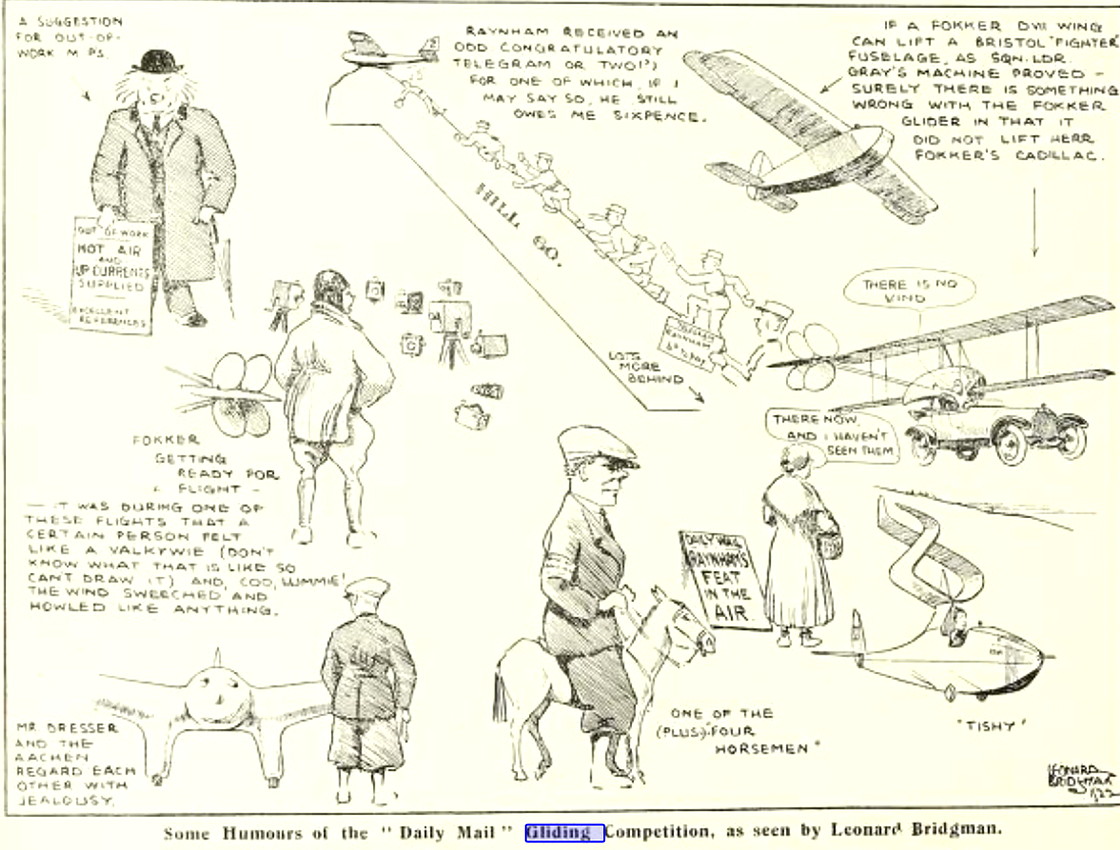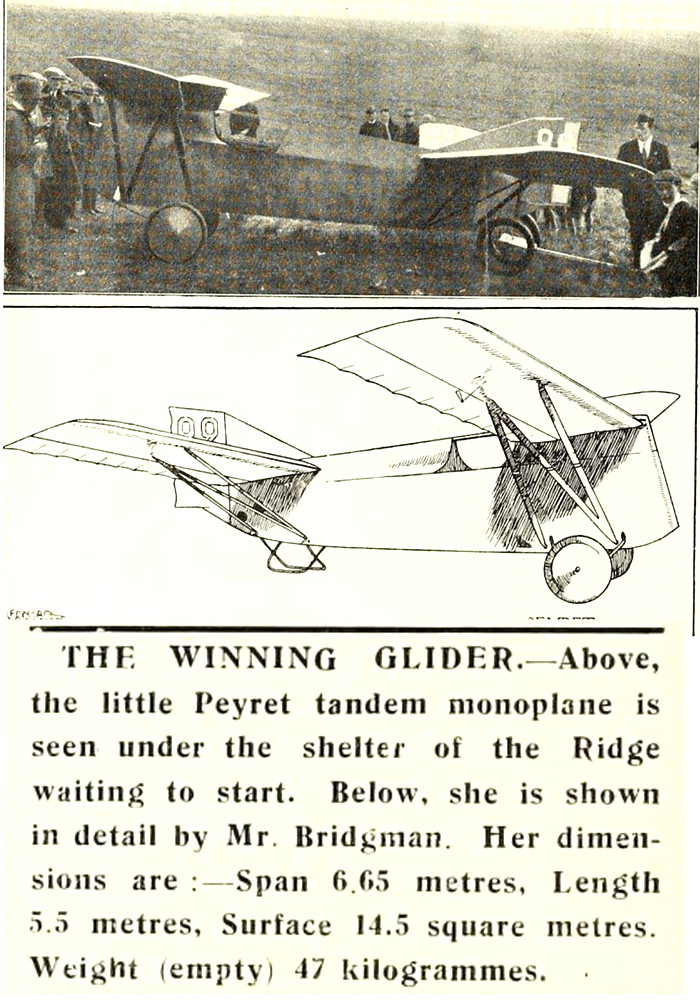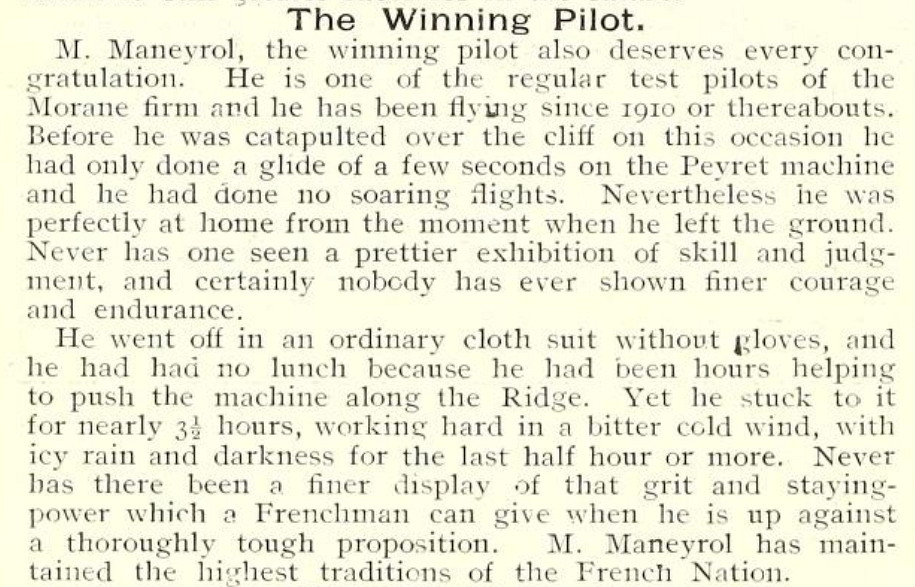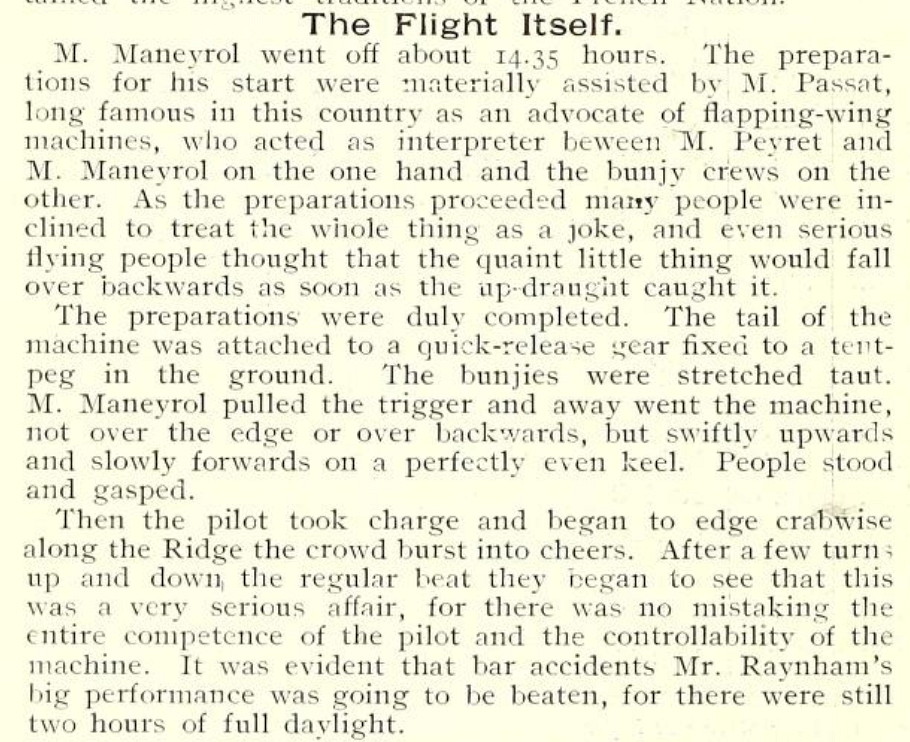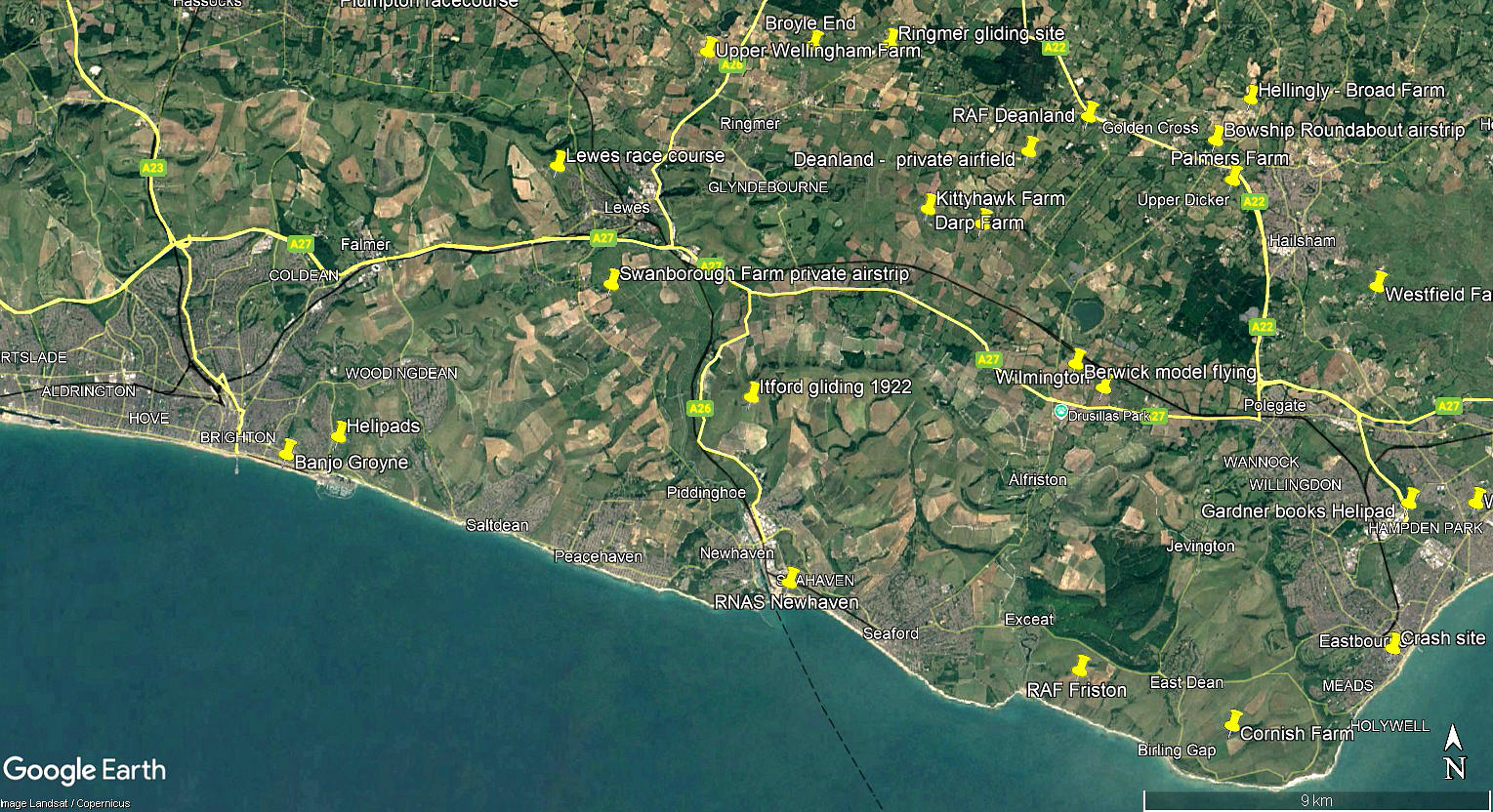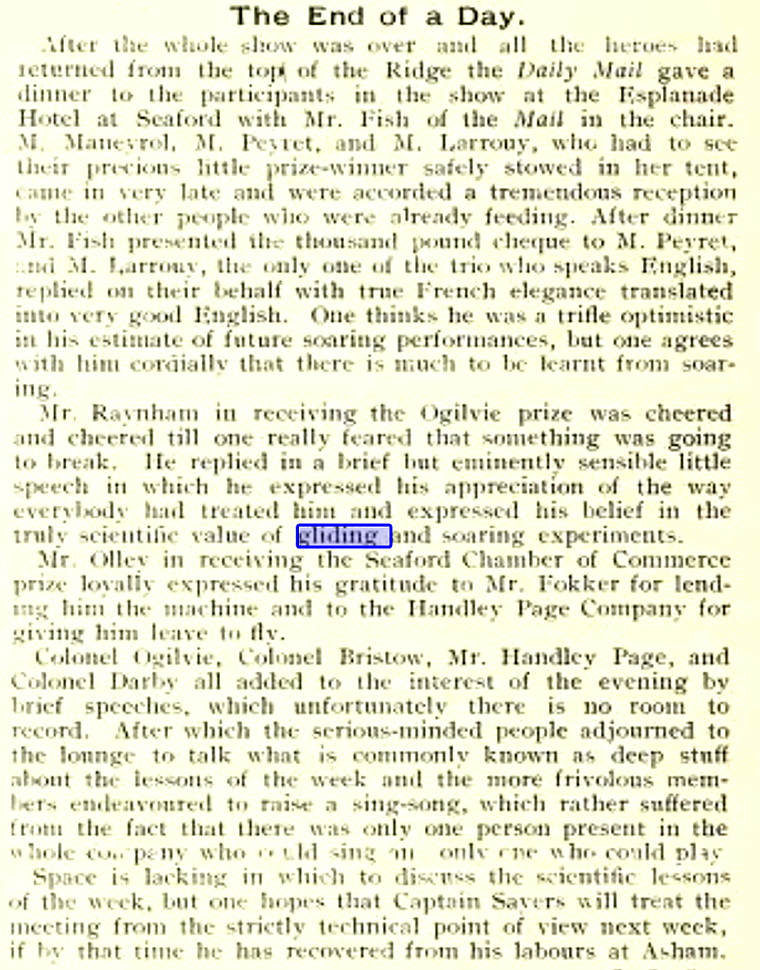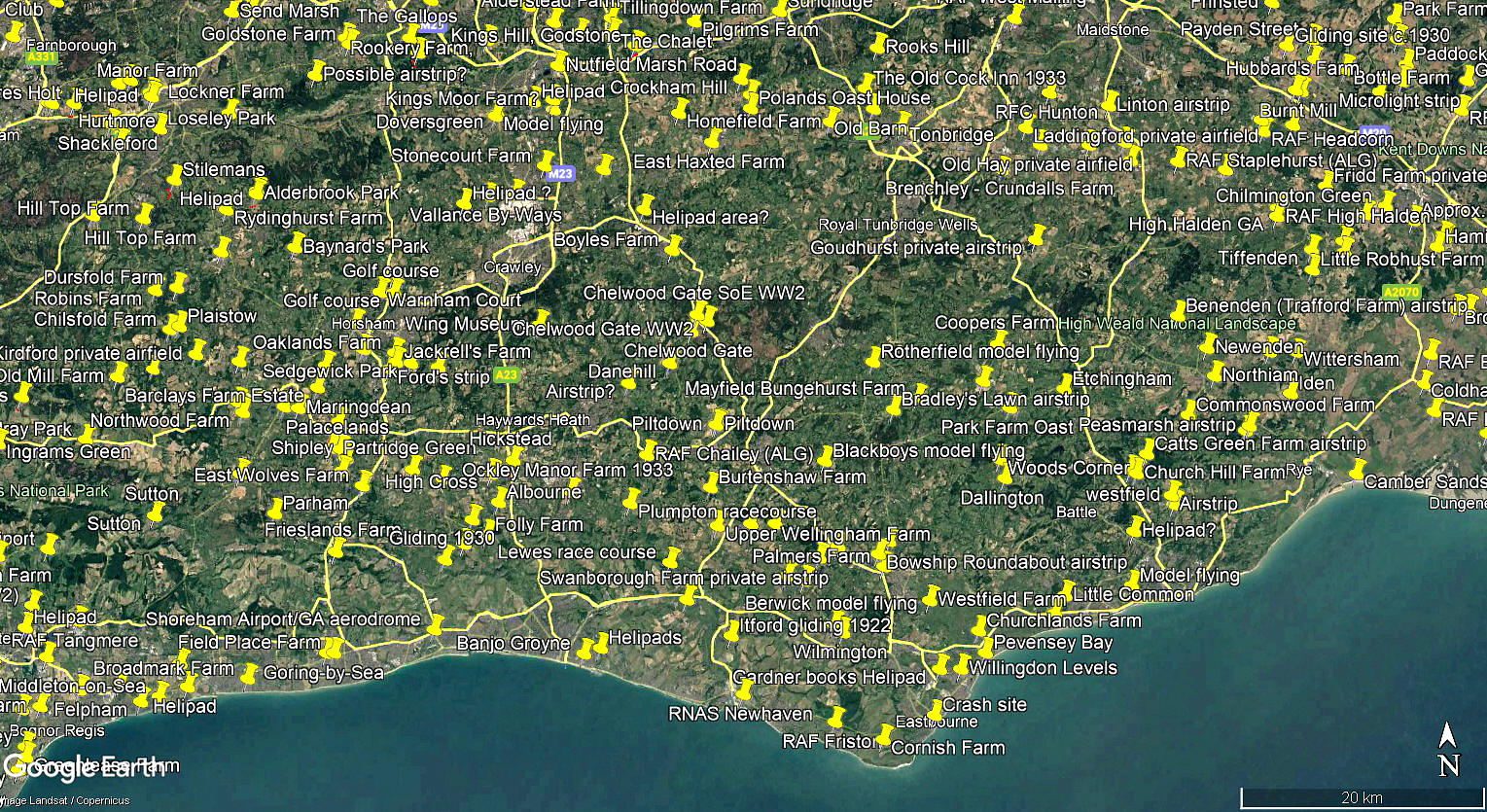Itford
ITFORD: The first major gliding event held in the U.K.
Organised by: Royal Aero Club and sponsored by the Daily Mail.
Location: Three sites on the northern part of the South Downs, roughly spread E from Itford, about 2.5nm N to NE from Newhaven town centre, and stretching E from Lewes town centre, very roughly 3nm to the NW.
Period of operation: 16th to 21st October 1922
NOTES: As a general rule, in the U.K. in those days, (has anything changed since?), the people at the top of society are very gifted at making their way into positions of authority. But, when it comes to understanding practical matters of every kind, they mostly and invariably display utter ignorance, total incompetence, and can often be regarded as basically being very stupid. Including our Prime Ministers, Tony Blair being a fine example, supporting the invasion of Iraq. against huge public demonstrations.
So, why on earth was it arranged to hold this event in October? Obviously none of those in charge bothered to notify the weather Gods in charge of the winds. (No e-mail available in those days). A time of year, when, in the U.K, very unsettled weather can usually be predicted. The main flying site on Itford Hill, facing west, was ideal, no doubt about that, but, as said, the ancient weather Gods, always looking for mischief, had other ideas.
The event had been widely publicised and thousands turned up to witness the competition, the Daily Mail offering a £1,000 prize to the winner. This being roughly about £70,000 today, (in 2025). What we need to remember, as so often, the U.K. was lagging behind, in this case regarding gliding. After WW1 when Germany was forbidden to develop powered aircraft, they took to gliding with much enthusiasm. And, soon became world leaders.
But, the French had, in the early years, pioneered powered flight - and learnt a thing or two along the way. So perhaps we should not be too much surprised that a French design and pilot won the event. With a design that to my eyes could not be less 'glider-like' in its configuration.
A MICHAEL T HOLDER GALLERY
We have Mike Holder, a great friend of this 'Guide', to thank for providing the copious amount of items shown below. His maps and Google Earth © images being very much appreciated.
ADVANCE NOTICES
The Short article One was published in the Evening News on the 25th September, and, the Short article Two was published in The Aeroplane on the 11th October 1922. With, (I imagine), so much advance notice of this most notable event being spread around, it can hardly be surprising how many spectators turned up.
THE FOUR MAIN LOCATIONS
The 'official map' was published in The Aeroplane on the 18th October. The photo showing the HQ is from The Old Flying Days by Charles Turner.
DIAGRAMS OF SIX OF THE COMPETING GLIDERS + PLUS A COMPOSITE PICTURE
All three of these items were published in The Aeroplane on the 18th October 1922. Note the diversity of basic design configurations compared to today.
MY COMMENT
With so much content to choose from I have made the decision to create sub-sections for the main sources, in no particular order of preference. So, to start, all these items are from The Story of Gliding by Ann Welch.
Photo One is of Bardot in the Dewoitine. I do not think this is a 'trick' picture, the glider being superimposed as was common practice for many a year in those days.
Photo Two is of F P Raynham. Photo Three is of the plucky but unlucky G W Cain. It appears he managed a 'bounce'. Photo Four is of Herne in the DH52. Am I mistaken in thinking, looking at this picture, that the left wing is already showing signs of twisting so severe that it was breaking up soon after being launched? The accident report has been obtained from ASN Flight Safety.org.
ITFORD HILL
ILLUSTRATED LONDON NEWS 21st OCTOBER 1922
BEDDINGHAM HILL
FLIGHT MAGAZINE, 19th and 26th OCTOBER 1922
Perhaps rather surprisingly, it appears that Flight only featured this picture of some notable people at FIRLE BEACON in the 19th October issue. What I think is very interesting indeed, is that several very important people in aviation, including those manufacturing powered aircraft, decided to attend this event.
Photo Three and Eight show the winner of the event. A more ungainly glider design ever? But it obviously worked, very well indeed.
FIRLE BEACON
A COUPLE OF PRESS ITEMS
The two part article was published in the Sheffield Daily Telegraph on the 17th October. The excerpt is from the Derby Daily Telegraph, published on the 20th October.
THE AEROPLANE MAGAZINE, 18th and 25th OCTOBER 1922
These items were all published on the 18th October.
ITEMS FROM THE 25th OCTOBER
The "Humours" were initially published in the Daily Mail, and then copied in The Aeroplane. Have to say I found it rather interesting to see what was considered amusing in those days. Most drawings barely got a grimace out of me, let alone a smile. The exception being in the top left hand corner. This being timeless of course.
THE WINNER
AND FINALLY
The local area and area views are from my Google Earth © derived database.
A COUPLE OF EXTRA COMMENTS
Most of my flying in light aircraft involved the use of a reciprocating piston thumper, driving a propeller that beat the air into submission, aided no doubt by the production of noise. Producing noise is, I would say, the main ingredient required in aviation to go anywhere a long way away more of less roughly horizantally as opposed to vertically. If you want to quickly ascend vertically, just add a lot more noise. And I do mean a lot more.
But, when it comes to the purest and most skilful aspects of flying - it has to be gliding. Reading the air, understanding how it works, and how to take every advantage of lift it has to offer - as opposed to just boring a hole through it - as I did.
Along the way over the years I managed to get a few flights in gliders. Not just in the UK but also in France, the Czech Republic and New Zealand. These ranged from fairly old fashioned types to the very latest, and the difference was quite remarkable. Indeed, in the latest types, (albeit over ten years ago in 2025), I could fly a circuit to land in the same way I used with a powered aircraft! And, coming down on base leg and finals, needing to use the speed brakes to slow it down! Plus, in conditions that were not condusive to serious gliding.
We'd love to hear from you, so please scroll down to leave a comment!
Leave a comment ...
Copyright (c) UK Airfield Guide















